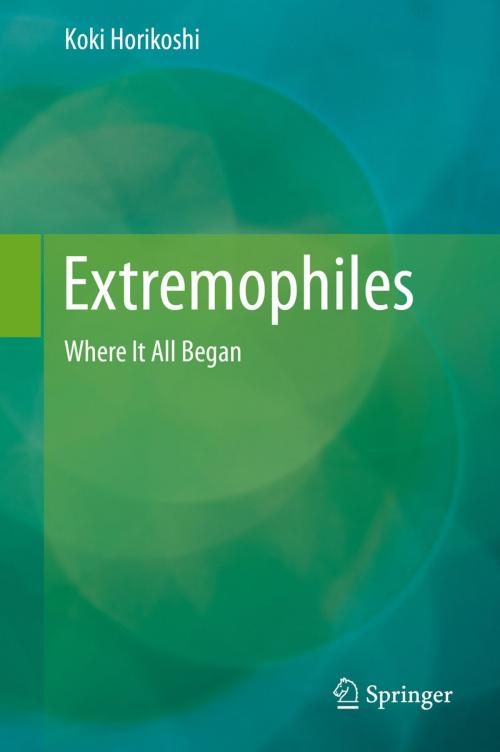Extremophiles
Where It All Began
Nonfiction, Science & Nature, Science, Biological Sciences, Microbiology, Nature| Author: | Koki Horikoshi | ISBN: | 9784431554080 |
| Publisher: | Springer Japan | Publication: | March 23, 2016 |
| Imprint: | Springer | Language: | English |
| Author: | Koki Horikoshi |
| ISBN: | 9784431554080 |
| Publisher: | Springer Japan |
| Publication: | March 23, 2016 |
| Imprint: | Springer |
| Language: | English |
Koki Horikoshi — discoverer of the alkaliphiles, microbes that thrive in alkaline environments — describes in his autobiography how the research on extremophiles started and developed. He is a pioneer in the study of these microorganisms that thrive in extreme conditions, and in his book he opens a new vista of the microbial world, pushing the field to expand from the surface of the Earth to the subsurface, to the deep sea and outer space.
All major developments in extremophiles research are covered, stretching back to the historical use of microbes in mixed fermentation, indigo dyeing and the pasteurisation of sake. Events in Horikoshi’s life provide many valuable insights into the life of a budding scientist, inspired by the Renaissance culture of Florence that led him to the discovery of the alkaliphiles. Our daily lives have been greatly affected by Horikoshi’s research, such as the extensive screening he conducted for enzymes produced by alkaliphiles, now applied in many industries from biological laundry detergents to pharmaceutics. The book also reflects on numerous milestone events and people who contributed to the establishment of this field, including colleagues from all over the world.
This book is a good read for all microbiologists, encouraging readers to reach out to new worlds and discoveries. It will be treasured by all those interested in a life of a real pioneer.
Koki Horikoshi — discoverer of the alkaliphiles, microbes that thrive in alkaline environments — describes in his autobiography how the research on extremophiles started and developed. He is a pioneer in the study of these microorganisms that thrive in extreme conditions, and in his book he opens a new vista of the microbial world, pushing the field to expand from the surface of the Earth to the subsurface, to the deep sea and outer space.
All major developments in extremophiles research are covered, stretching back to the historical use of microbes in mixed fermentation, indigo dyeing and the pasteurisation of sake. Events in Horikoshi’s life provide many valuable insights into the life of a budding scientist, inspired by the Renaissance culture of Florence that led him to the discovery of the alkaliphiles. Our daily lives have been greatly affected by Horikoshi’s research, such as the extensive screening he conducted for enzymes produced by alkaliphiles, now applied in many industries from biological laundry detergents to pharmaceutics. The book also reflects on numerous milestone events and people who contributed to the establishment of this field, including colleagues from all over the world.
This book is a good read for all microbiologists, encouraging readers to reach out to new worlds and discoveries. It will be treasured by all those interested in a life of a real pioneer.















